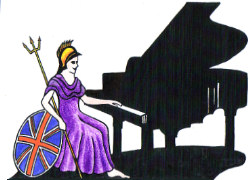Piano Dealers Shops Retailers Selling Pianos,
and Music
Pianos For Sale Robert Morley & Company Ltd., Pianos for Sale UK

UK Piano Page

from Robert Morley & Company Ltd.
Price: £2,840.00
Date: 10-12-2024 04:02PM
Expiration Date: 31-12-2027 03:59PM

Victoria Works
Benjamin Street
Wakefield, West Yorkshire WF29AR
England
We deal in a wide variety of Pianos traditional &
Madbrook Farm
Warminster Road
Westbury, Wiltshire BA133RB
England
OVER 100 PIANOS IN STOCK ! Sales at our stores in
28 Stamford New Road
Altrincham, Cheshire WA14 1EJ
England
If you are not near to a Dawsons store, you can
Tree Tops
3 Teviot Bank Gardens
Hawick, Renfrewshire TD9 8PB
Scotland
We can retail most of the well known brands of
156 Hatfield Road
St Albans, Hertfordshire AL1 4TU
England
Selection of new and restored pianos always in
Music Festival for performers and guests Our 10th
18-06-2022 12:30PM
The Morecambe Bay Piano Group was set up to extend
11-12-2021 01:00PM
The Morecambe Bay Piano Group was set up to extend
08-01-2022 01:00PM
The Morecambe Bay Piano Group was set up to extend
12-02-2022 01:00PM
French Polishing and Pianos
French polishing is a wood finishing technique used on pianos that result in a very high gloss finish, with a deep colour and chatoyancy. French polishing consists of applying many thin coats of shellac dissolved in denatured alcohol using a rubbing pad lubricated with one of a variety of oils.
French polishing became prominent in the 18th century. In the Victorian era. There are some references to shellac in Europe as early as 1590, French polishing was most commonly used on expensive woods such as mahogany or walnut in order to preserve their beauty. Commonly French polished items at the time were impressive pieces of furniture or instruments because they were expected to look good at all times. The Pad is lubricated with oil that then becomes part of the overall finish. the oil helps to stop the pad from sticking and lifting previously applied layers of shellac. , Softer oils such as mineral oil will produce a glossier but less hard finish whereas more viscous oils such as walnut oil and olive oil will produce a more durable finish.
Cleaning French Polish and Pianos
If the item has been French polished, rubbing the surface with a soft, clean cloth is usually ample. You can also polish it now and then with a little wax or even with a tiny bit of furniture cream. Sticky marks should be removed immediately with a cloth soaked in warm, soapy water and then wrung out it needs to be damp, not soaking wet.